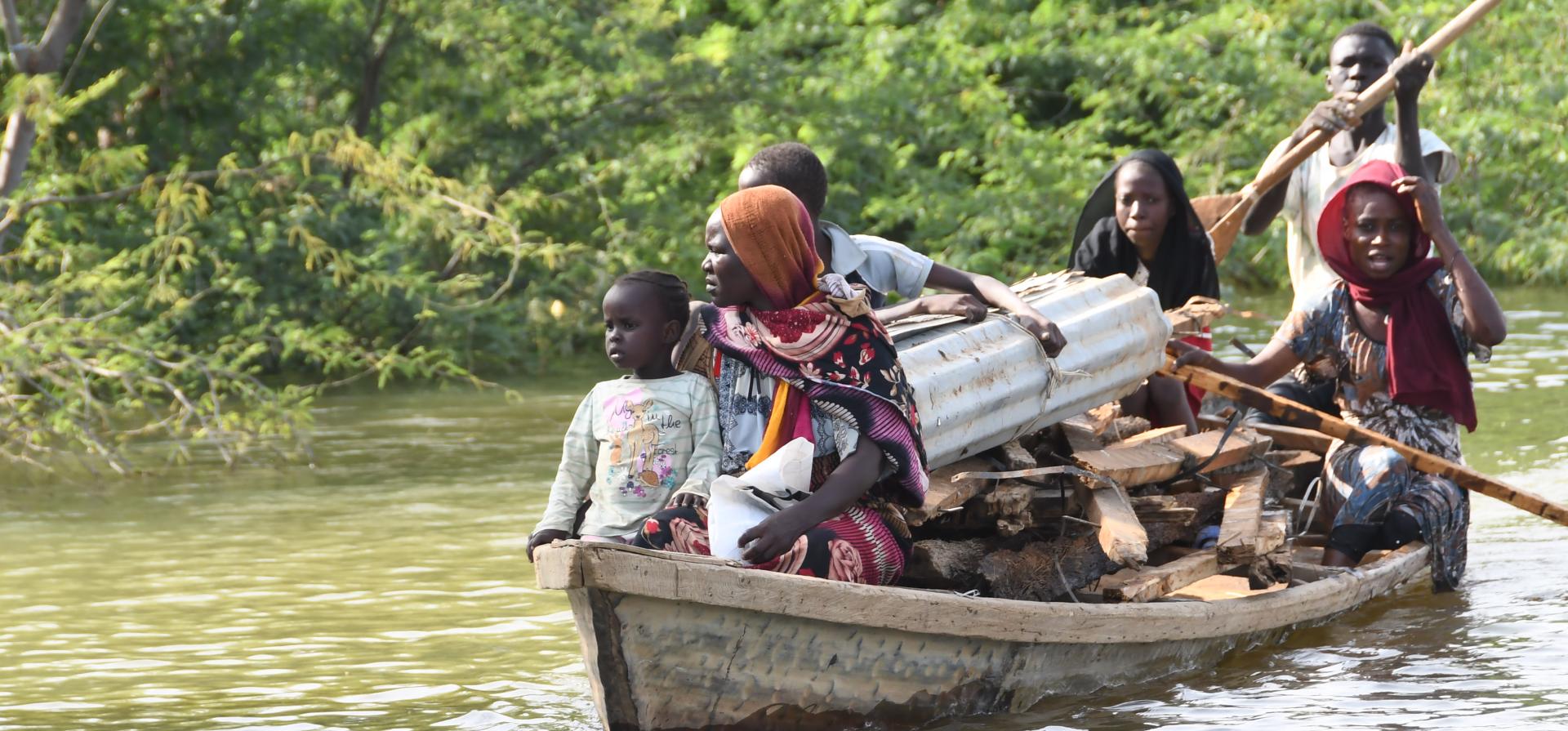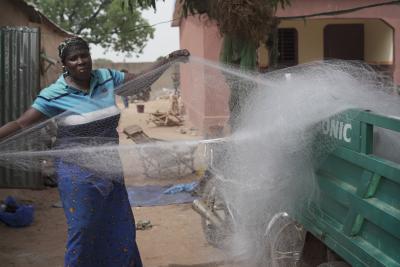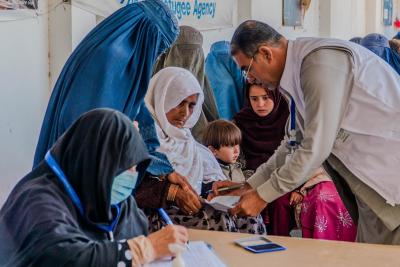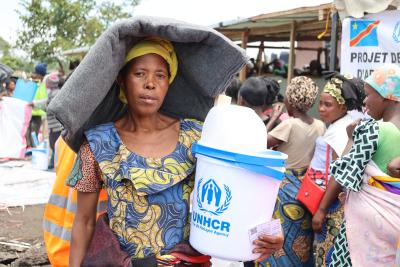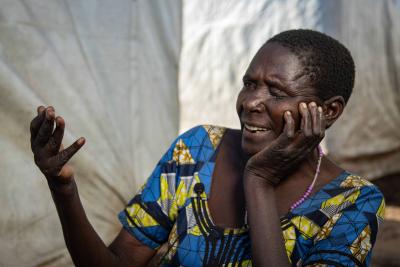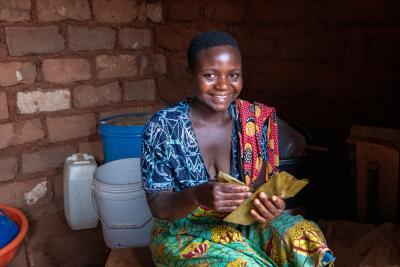Why does UNHCR ask for flexible funding?
UNHCR’s mission is supported by dozens of States, hundreds of companies, and millions of individual donors. What they share is compassion, generosity, and a desire to improve the lives of people who have been forced to flee or who are stateless. Many donors are motivated by a particular cause, something that touched them and spurred them to contribute, and they ask UNHCR to put their funds to good use in relation to that cause. In this way, many of the funds that UNHCR receives are “earmarked”, or dedicated to a particular country or a specific project. This is a vital lifeline for millions of people who are in need, provided by millions of people who care.
However, there are two types of situations where donors’ generously allocated funds may not reach people in need. One such situation is an unforeseen emergency that forces people to flee from their homes. When this happens, UNHCR needs to act with speed and agility to bring life-saving support. Funds that are reserved for other countries cannot be used.
The second type of situation is when people are trapped in a forgotten or intractable crisis that gets little or no media attention. This might be a long-running conflict or territorial dispute that creates a protracted exile, or it might involve people who are stateless and effectively voiceless, unable to generate the political momentum required for them to be legally recognized. These kinds of cases may be neglected and overshadowed by more headline-grabbing developments, and they may attract little funding as a result, making it hard to sustain the financing of even the most basic needs of the people affected.
In short, donors respond generously to the visible needs. But some needs are unseen or unforeseen, and it is crucial that UNHCR has the ability to meet those needs and to ensure that no one is left behind. This means having access to funds that are unearmarked, or only “softly earmarked” – linked to a thematic area of UNHCR’s work or a geographical area that extends beyond one country. This is the most important type of funding UNHCR can receive, and some donors respond generously with financial support which is flexible. Flexible funding contributed to the mission of UNHCR as a whole, is an expression of trust in the Office, and an expression of solidarity with the people the Office serves.
Is flexible funding used for anything else apart from neglected situations and emergencies?
Yes. As well as meeting the most desperate and urgent needs in particular countries, flexible funding also supports the global programmes that are managed centrally and support UNHCR’s operations worldwide. These include activities such as stockpiling relief items and managing the supply chains that move them from production to the end user, which was especially important when COVID-19 struck.
Another global programme that benefited from flexible funding was the roll-out of proGres v4, the system that UNHCR uses to register – and thus protect and assist – refugees, asylum-seekers and internally displaced people. Global programmes also include education-related projects, resettlement work, innovation, and private sector fundraising – generating a return of more than $9 to every $1 invested in 2022.
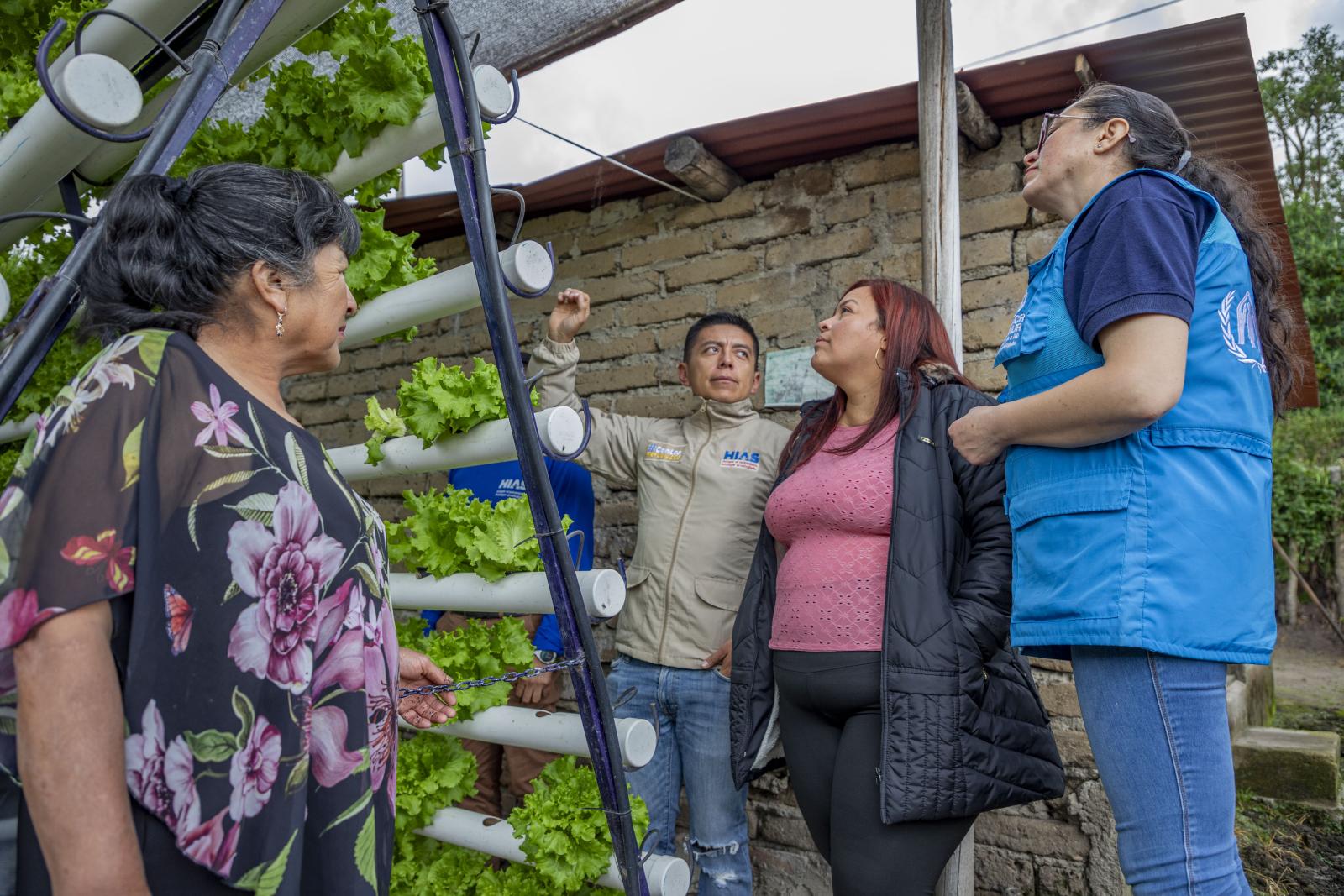
If I don’t give to a specific cause, can I be sure that my donation will make a difference?
Yes. Although the use of unearmarked funding is not easily ascribed to a specific donor, it can make an even bigger impact, and donors of unearmarked funds deserve far more thanks than they tend to get. This is because their funding can be recycled and re-allocated again and again, potentially saving lives multiple times in the year when it is deployed.
The vast majority of UNHCR’s unearmarked funding comes at the start of the calendar year, so in addition to being flexible it is also timely, and during the year it may be called upon repeatedly to bridge a temporary gap or to fill a budgetary hole in an emergency, before being released when earmarked funding becomes available. Thus, unearmarked funding is not single-use finance, but an indispensable multi-tool. While earmarked funding is a lifeline, unearmarked funding prevents that lifeline from breaking.
Types of funding UNHCR receives:

How did UNHCR use flexible funding in 2022?
The following paragraphs show how UNHCR used flexible funding in 2022. You will be able to find an overview, financial tables, and case studies of how and where flexible funding made a difference.
Who gives UNHCR the most flexible funding?
In 2022, the major contributors of unearmarked funding included the Governments of Sweden, Norway, the United Kingdom, the Kingdom of the Netherlands, Denmark, Germany, Japan, France and Canada.
Germany and the United States were the clear leaders in providers of softly earmarked funding.
Private donors also made very generous flexible contributions through UNHCR’s National Partners in Spain, Japan, the United States, the Republic of Korea, Italy and Sweden as well as directly to UNHCR in Italy and the Republic of Korea.
Flexible thematic funding
Flexible funding includes softly earmarked thematic funds – provided towards outcomes such as education, climate action, gender-based violence prevention and response, and to overall emergency preparedness and response (see below). They increase the overall amount of flexible funding UNHCR receives, while driving investments in substantive outcomes considered to be joint priorities of UNHCR and its donors.
UNHCR received nearly $73 million in flexible thematic contributions in 2022, an increase from $37 million in 2021. Overall, the increase in thematic contributions strengthened UNHCR’s ability to deliver life-saving protection, assistance, and solutions for its work around climate action, education and gender-based violence prevention and response. The top donor, with over $13 million, was the Government of Japan, a longstanding supporter of UNHCR’s work in protection and gender-based violence prevention and response in particular. The increase was also driven by private donor contributions, including $21 million provided for global emergency preparedness and response, mostly from individual giving donors.
Overall, there was an unprecedented level of funding from public and private donors to UNHCR’s response to emergencies, and much of it was flexible. Of some $3.5 billion in voluntary contributions towards new emergency situations such as Ukraine or protracted ones such as Afghanistan, Myanmar, Syria or drought in the Horn of Africa, $1.6 billion was softly earmarked. Given the growing number and complexity of emergencies, and the chronic underfunding for many emergencies out of the spotlight, flexible and timely funding support is ever more critical for UNHCR’s ability to prepare and respond.
Multi-year funding and the timeliness of funding
Flexible funding includes not only unearmarked and softly earmarked funds pledged for particular year but also funds that are pledged for 24 months or more. The value of this type of contribution is its predictability, allowing UNHCR to apportion resources where they are needed most at the beginning of the year.
Multi-year funding increased from $584 million in 2021 to $618.4 million in 2022, with a slight decline as a share of total funding, from 11% in 2021 to 10% in 2022, due to the high level of funding for Ukraine as an emergency in 2022. 51% of the 2022 portion of multi-year funding was earmarked or tightly earmarked, limiting UNHCR’s ability to have flexible multi-year implementation agreements with its NGO partners.
However, multi-year contributions generally include a much larger proportion of unearmarked funding than UNHCR receives on average in any given year. In 2022, for example, Sweden, the Kingdom of the Netherlands, Switzerland and Denmark were all major contributors of multi-year funding, and more than 40% of this finance was entirely unearmarked.
These flexible, multi-year contributions mean that the bulk of UNHCR’s unearmarked funding for the year is already predictably in place on 1 January. This bedrock of uninterrupted financial support enables UNHCR to plan and act with confidence, avoiding the risk of a gap in funding for the most vital needs, even if the wider picture of global underfunding means that many planned activities cannot be fully financed.
